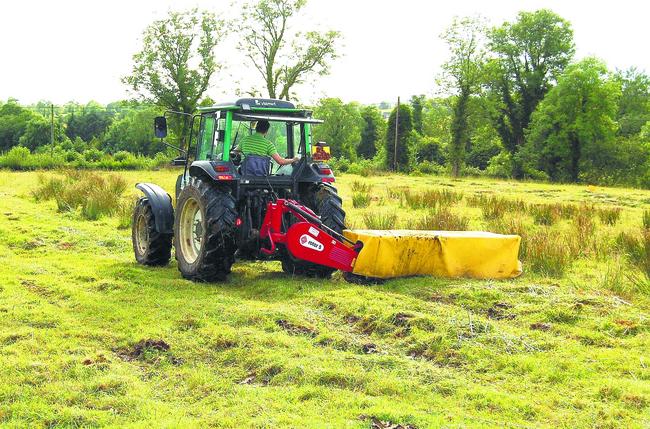GARDENING WITH GARETH: What to do about rushes? I bet you have a great lawn, a lawn thick and full of grass, with not a weed in sight?? No, me neither.
I embrace my clover, it’s a wonderful ‘weed’ to have in the garden after all the bees love it and when it dies off in patches every winter or so it feeds the grass nearby.
I love clover but I’m not a big fan of rushes, now I’ve none in my small urban lawn, but when I drive around I see a lot, both in lawns and in many surrounding fields.
There is great movement going on with cutting rushes in fields since the changes in the payments made to farmers, with payments being reduced for fields which were un-grazColumneable due to the density of rushes, so you may have noticed fields near to you being cut and mulched that were never cut for years.
In the home lawn rushes coming through are a sign that all is not well. Lawn grass needs adequate drainage, adequate aeration, adequate pH and adequate fertility, and if you lack in any of these department rushes are the inevitable consequence.
Sprays for rushes from the co-op are common place, but spraying to kill them off is just like painting over a damp wall, you’ve not sorted the problem you’ve just temporarily removed it. It is better to consider a more stepped approach:
Drainage.
Does your garden hold too much water? Does it sit saturated? Does it sit ringing-wet in the winter months? If so then you need to consider installing new drains to the lawn, or to check your existing pipes aren’t blocked by Iron/Silt or whatever.
Compaction.
Is your lawn area compacted? Do small puddles form on the surface after heavy rain? Is there lots of creeping buttercup? If so the lack of air entering the soil and the prevention of the water from travelling downwards in your lawn into your drainage system will have a negative effect on your grass growth and encourage conditions favoured by rushes. So time to aerate the lawn and work in some coarse sand.
Soil pH.
Grass grows where there is access to calcium, a pH which is low reduces the availability of this important mineral. Existing soil can be acidic – ie a peaty soil or it can be acidified (or soured) over time by rain and the application of fertilisers.
The management of pH in the 6.5-7 bracket will grow good grass, so the application of Garden Lime every few years will be immensely beneficial to your soil, raising the PH (sweetening soil).
Availability of Phosphorus and Potassium in the Soil. These two major nutrients are vital for good grass quality, but are rarely added to lawns, we concentrate too much on lashing Nitrogen on – in turn this application of Nitrogen acidifies the soil.
These nutrients can be applied in fertiliser form, just ask at your local garden centre for a balanced fertiliser.
Cutting.
Lawns like to be cut, rushes don’t. You may find rushes appear in the winter months but when you start cutting then the rushes reduce in volume. It is important that you cut your lawn regularly, and at a nice even height. Cutting too short or scalping the lawn only weakens the grass.
You may not have to correct everything mentioned above to remove the rushes from your lawn, you may just have to amend a few parts of your management but definitely give these areas a bit of attention and you’ll not have to reach for the chemicals as quickly!
Tags:







